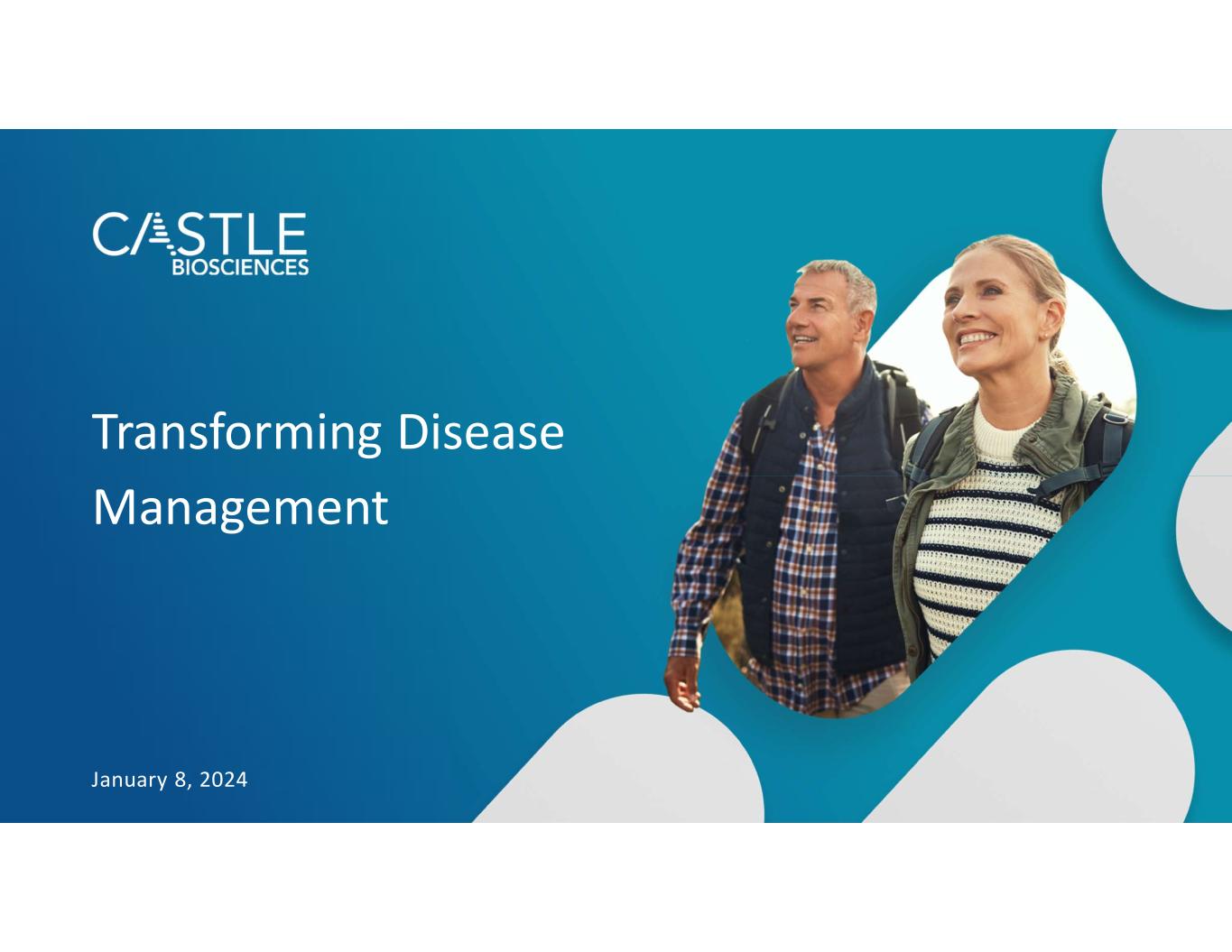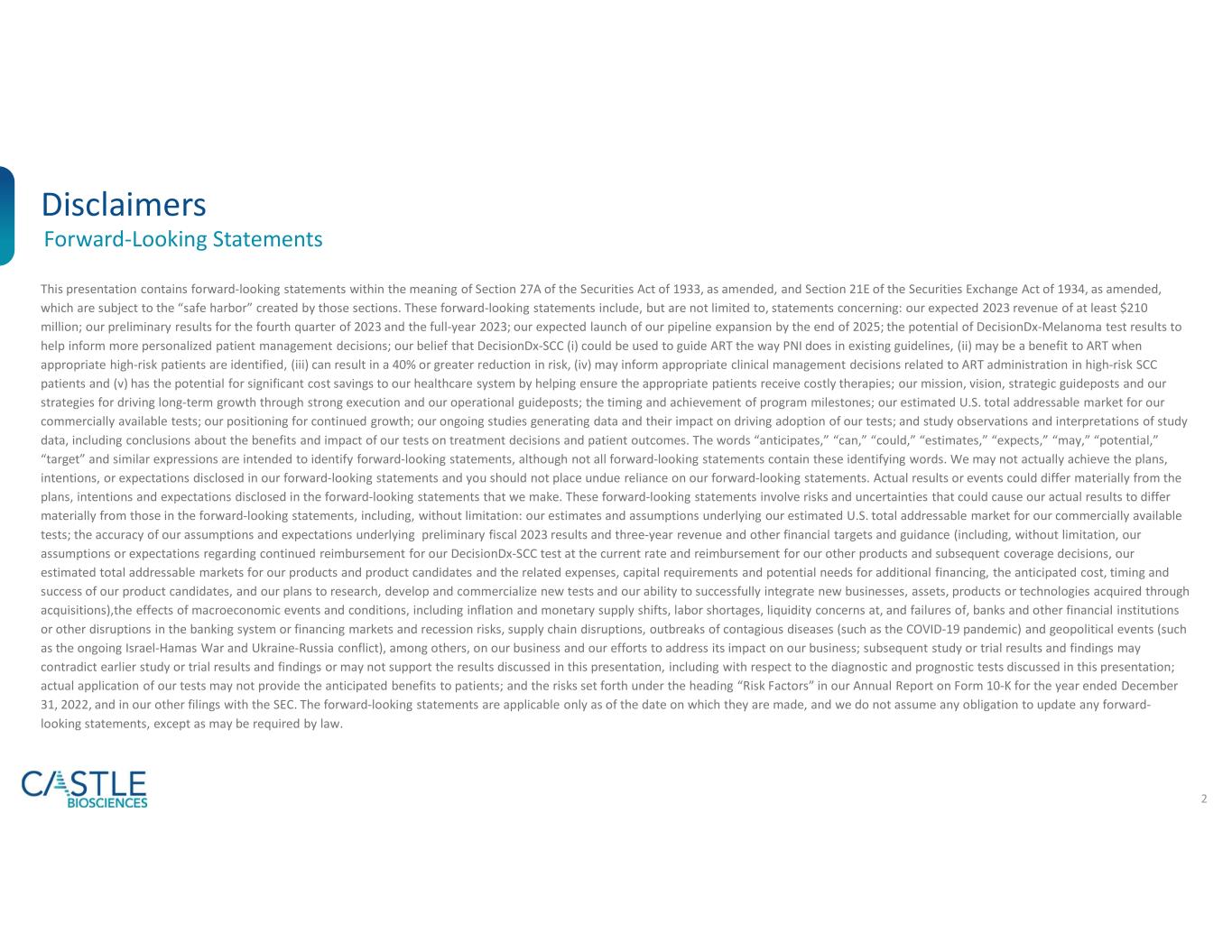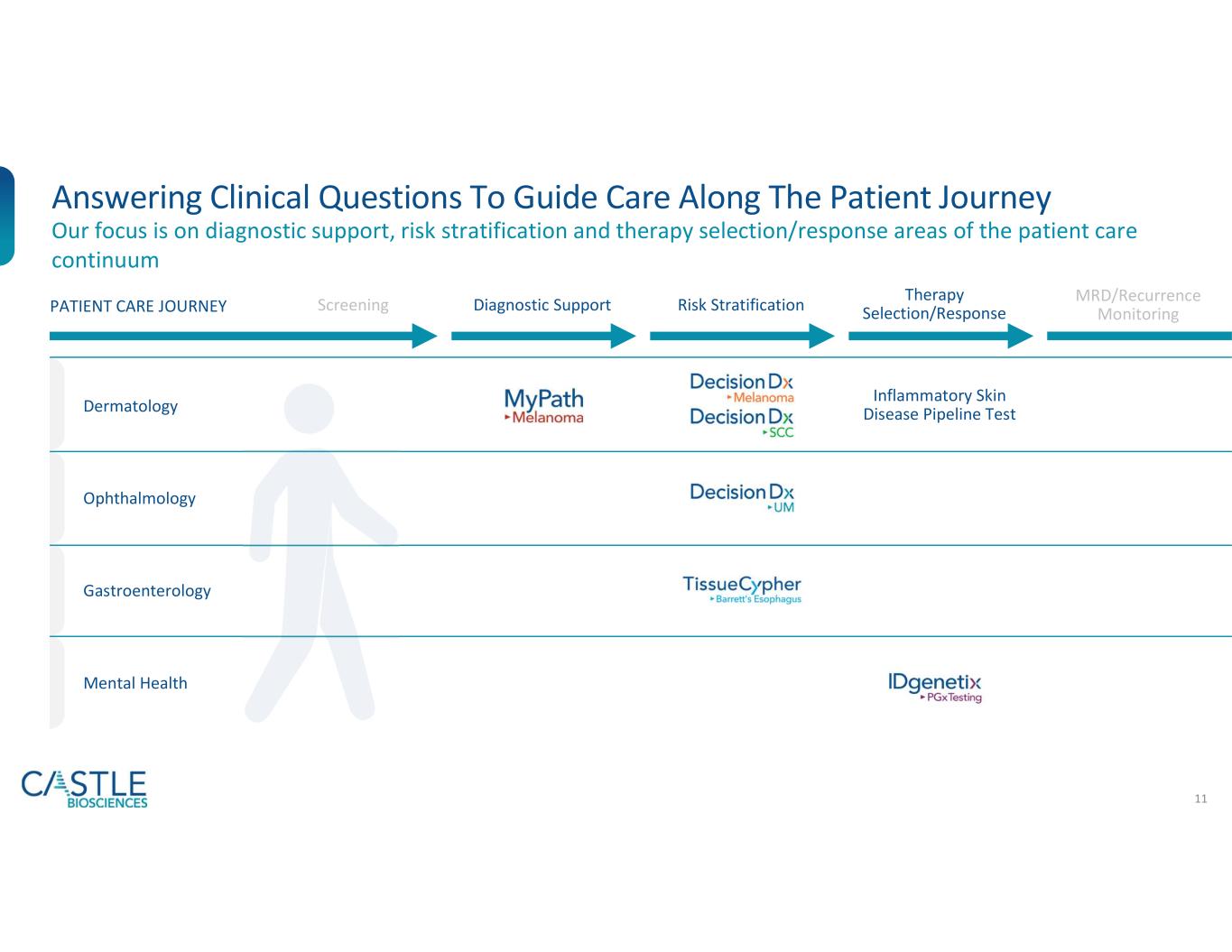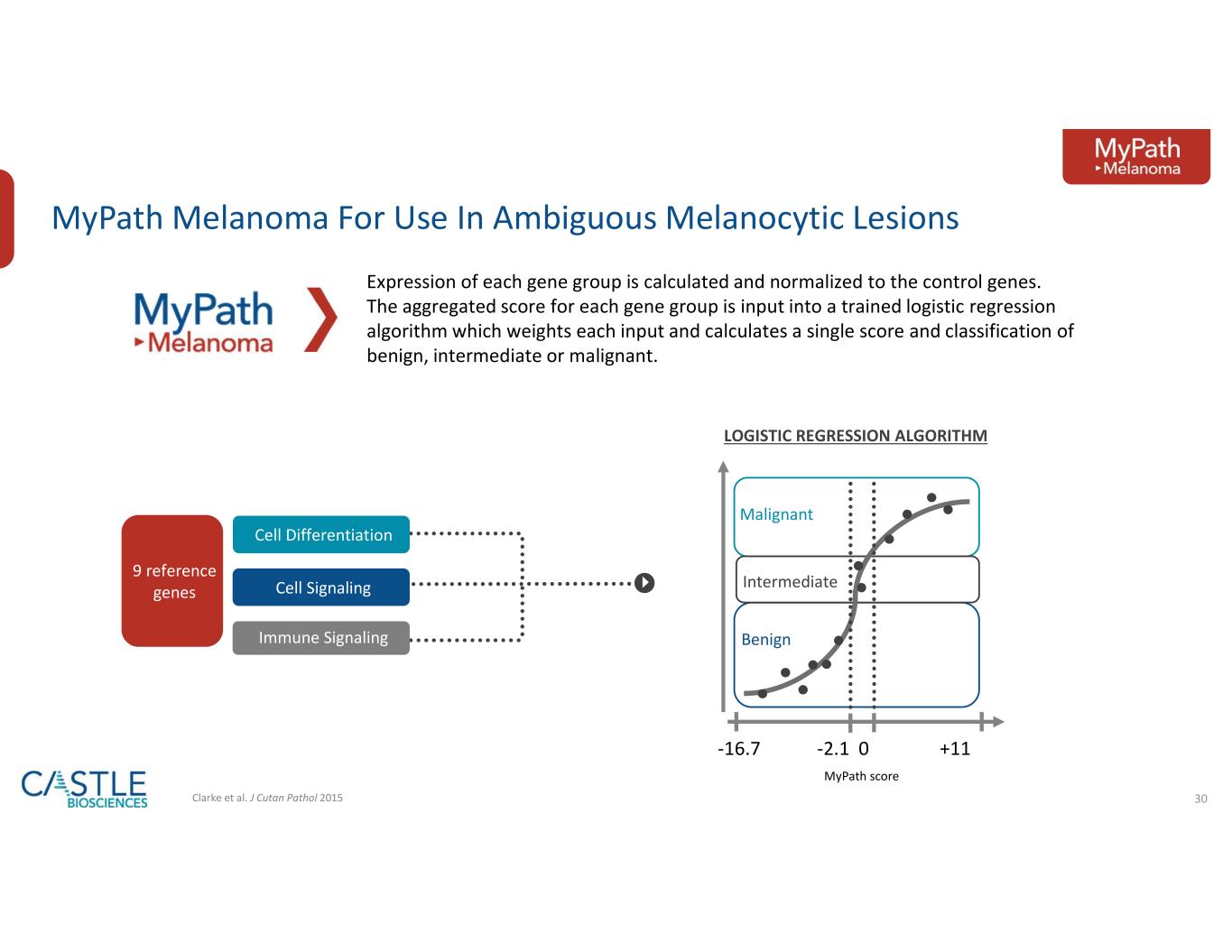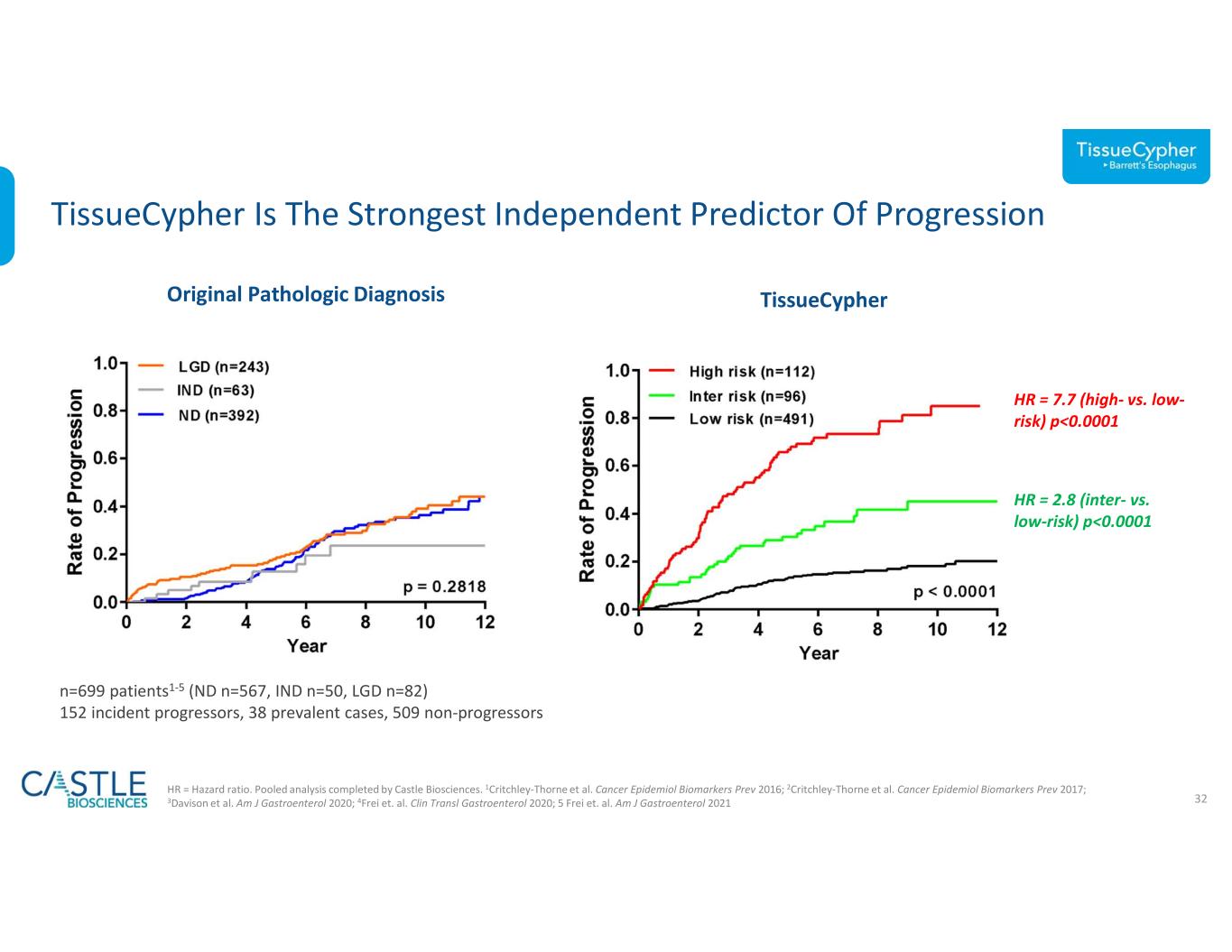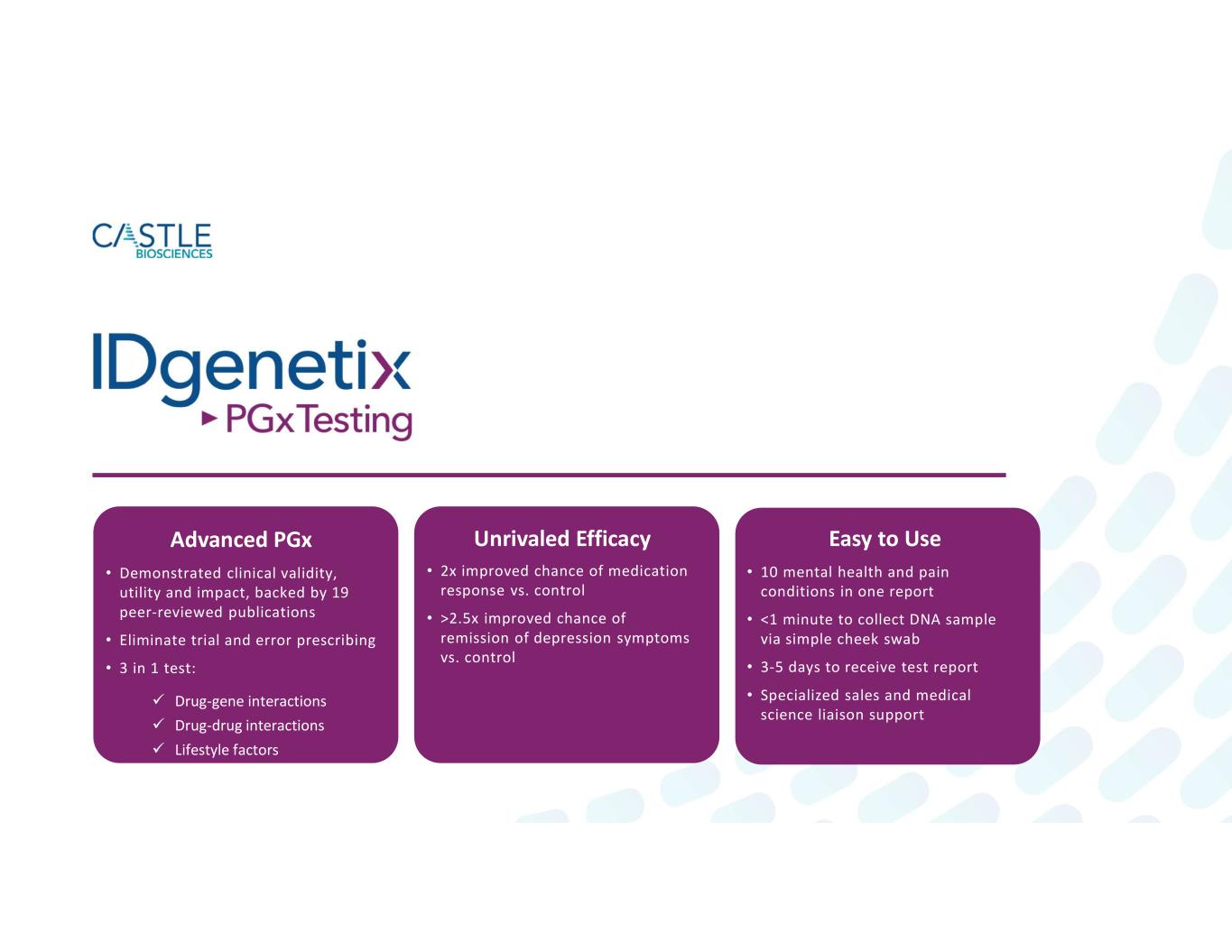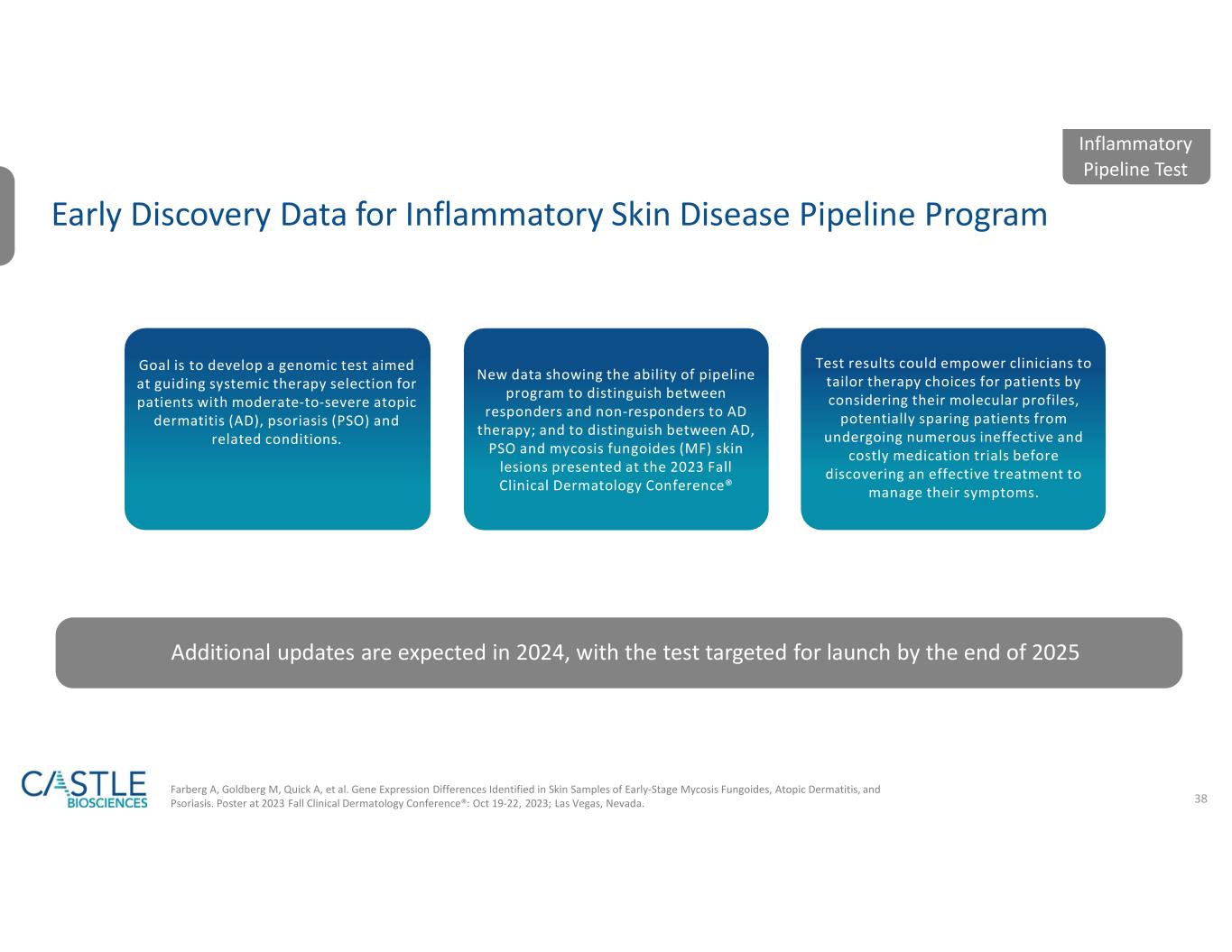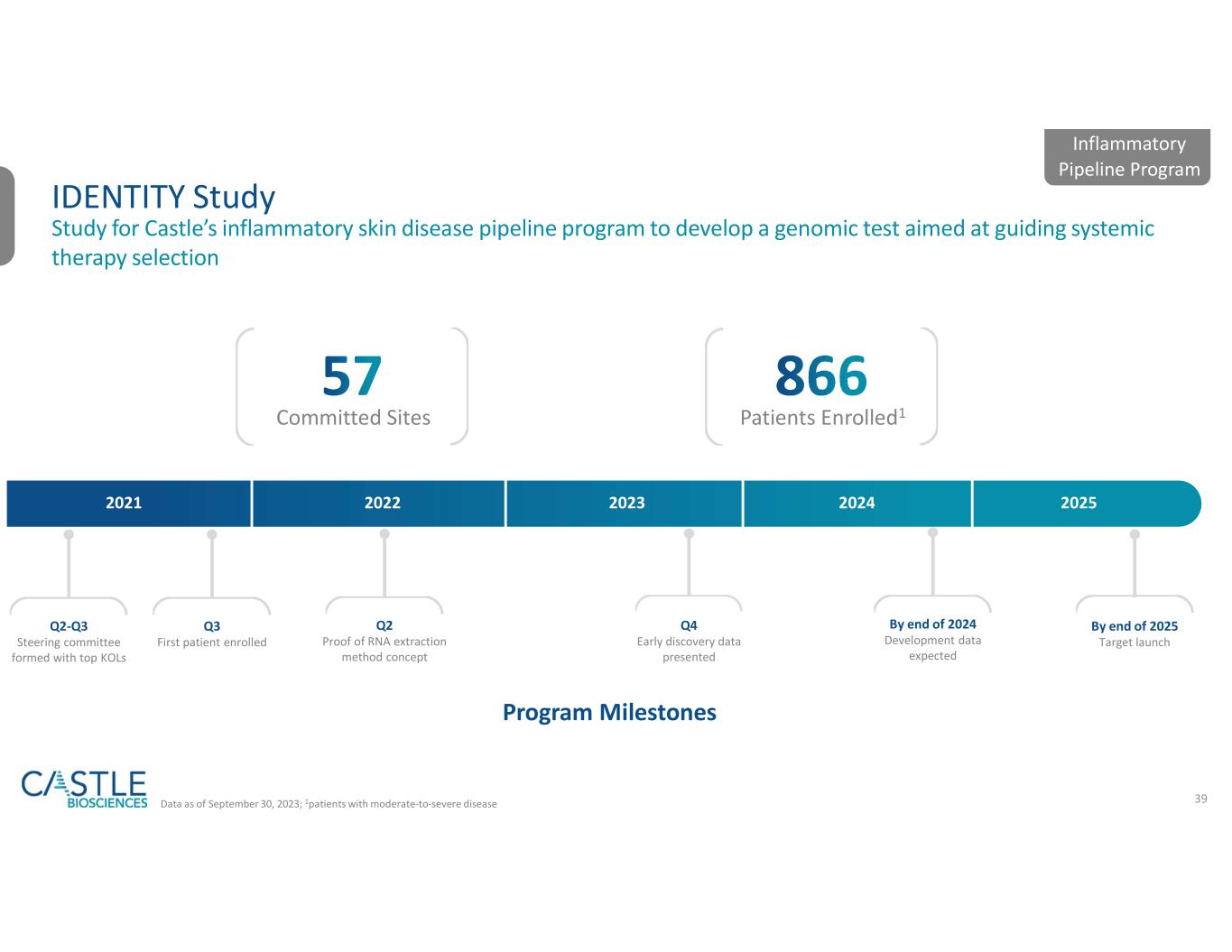Document
Castle Biosciences Announces Preliminary Fourth Quarter and Full-Year 2023 Results
Expect to deliver 2023 total revenue of more than $210 million, at least 53% growth over 2022
Delivered 70,429 total test reports in 2023, an increase of 59% compared to 2022
Year-end 2023 cash, cash equivalents and marketable investment securities expected to be approximately $243 million
FRIENDSWOOD, Texas - Jan. 7, 2024--Castle Biosciences, Inc. (Nasdaq: CSTL), a company improving health through innovative tests that guide patient care, today announced certain unaudited preliminary performance results for the fourth quarter and year ended Dec. 31, 2023.
“Our fourth quarter was the culmination of an exceptional year, where we delivered consistent, strong growth in both revenue and test volume,” said Derek Maetzold, president and chief executive officer of Castle Biosciences. “Our performance is a testament to stellar execution on our growth initiatives by our talented team. As a result, we expect to deliver more than $210 million in revenue for 2023, exceeding the floor of our guidance of at least $200 million. Additionally, we believe we have the right strategy, capabilities and innovative test portfolio to support patients and clinicians and for continued momentum in 2024 and beyond.”
Preliminary, Unaudited Fourth Quarter Ended Dec. 31, 2023, Highlights
•Delivered 20,284 total test reports in the fourth quarter of 2023, compared to 12,644 in the same period of 2022, an increase of 60%:
◦DecisionDx®-Melanoma test reports delivered in the quarter were 8,591, compared to 7,301 in the fourth quarter of 2022, an increase of 18%.
◦DecisionDx®-SCC test reports delivered in the quarter were 3,530, compared to 1,845 in the fourth quarter of 2022, an increase of 91%.
◦MyPath® Melanoma test reports delivered in the quarter were 1,018, compared to 822 MyPath Melanoma and DiffDx®-Melanoma aggregate test reports in the fourth quarter of 2022, an increase of 24%.
◦TissueCypher® Barrett’s Esophagus test reports delivered in the quarter were 3,441, compared to 1,030 in the fourth quarter of 2022, an increase of 234%.
◦IDgenetix® test reports delivered in the quarter were 3,299, compared to 1,214 in the fourth quarter of 2022, an increase of 172%.
◦DecisionDx®-UM test reports delivered in the quarter were 405, compared to 432 in the fourth quarter of 2022, a decrease of 6%.
Preliminary, Unaudited Year Ended Dec. 31, 2023, Highlights
•The Company expects to deliver more than $210 million for full-year 2023 total revenue.
•Total test reports delivered in 2023 were 70,429, compared to 44,419 in the same period of 2022, an increase of 59%:
◦DecisionDx-Melanoma test reports delivered in 2023 were 33,330, compared to 27,803 in 2022, an increase of 20%.
◦DecisionDx-SCC test reports delivered in 2023 were 11,442 compared to 5,967 in 2022, an increase of 92%.
◦MyPath Melanoma and DiffDx-Melanoma aggregate test reports delivered in 2023 were 3,962, compared to 3,561 in 2022, an increase of 11%.
◦TissueCypher Barrett's Esophagus test reports delivered in 2023 were 9,100, compared to 2,128 in 2022, an increase of 328%.
◦IDgenetix test reports delivered in 2023 were 10,921, compared to 3,249 in 2022, an increase of 236%.
◦DecisionDx-UM test reports delivered in 2023 were 1,674, compared to 1,711 in 2022, a decrease of 2%.
Cash, Cash Equivalents and Marketable Investment Securities
Year-end 2023 cash and cash equivalents are expected to be approximately $99 million. Additionally, the Company expects to hold approximately $144 million in short-term investments.
Castle Biosciences has not completed the preparation of its financial statements for the fourth quarter or year ended Dec. 31, 2023. The preliminary, unaudited information presented in this press release for the quarter and year ended Dec. 31, 2023, is based on management’s initial review of the information presented and its current expectations, and is subject to adjustment as a result of, among other things, the completion of the Company’s end-of-period reporting processes and related activities, including the audit by the Company’s independent registered public accounting firm of the Company’s financial statements. As such, any financial information contained in this press release may differ materially from the information reflected in the Company’s financial statements as of and for the year ended Dec. 31, 2023. Additional information and disclosures would be required for a more complete understanding of the Company’s financial position and results of operations as of and for the quarter and year ended Dec. 31, 2023. Accordingly, undue reliance should not be placed on this preliminary information.
About Castle Biosciences
Castle Biosciences (Nasdaq: CSTL) is a leading diagnostics company improving health through innovative tests that guide patient care. The Company aims to transform disease management by keeping people first: patients, clinicians, employees and investors.
Castle’s current portfolio consists of tests for skin cancers, Barrett’s esophagus, mental health conditions and uveal melanoma. Additionally, the Company has active research and development programs for tests in other diseases with high clinical need, including its test in development to help guide systemic therapy selection for patients with moderate-to-severe atopic dermatitis, psoriasis and related conditions. To learn more, please visit www.CastleBiosciences.com and connect with us on LinkedIn, Facebook, X and Instagram.
DecisionDx-Melanoma, DecisionDx-CMSeq, DecisionDx-SCC, MyPath Melanoma, DiffDx-Melanoma, TissueCypher, IDgenetix, DecisionDx-UM, DecisionDx-PRAME and DecisionDx-UMSeq are trademarks of Castle Biosciences, Inc.
Forward-Looking Statements
This press release contains forward-looking statements within the meaning of Section 27A of the Securities Act of 1933, as amended, and Section 21E of the Securities Exchange Act of 1934, as amended, which are subject to the “safe harbor” created by those sections. These forward-looking statements include, but are not limited to, statements concerning our expectations regarding: (i) our full year 2023 revenue guidance of at least $210 million; (ii) the ability of our strategy, capabilities and innovative test portfolio to support continued momentum in 2024 and beyond; (iii) the accuracy of our preliminary test report counts both for full year and fourth quarter of 2023; (iv) trends in revenues and test report volumes; and (v) the accuracy of our expected year-end 2023 cash and cash equivalents, including with regard to short-term investments. The words “anticipate,” “can,” “could,” “expect,” “goal,” “may,” “plan” and similar expressions are intended to identify forward-looking statements, although not all forward-looking statements contain these identifying words. We may not actually achieve the plans, intentions, or expectations disclosed in our forward-looking statements and you should not place undue reliance on our forward-looking statements. Actual results or events could differ materially from the plans, intentions and expectations disclosed in the forward-looking statements that we make. These forward-looking statements involve risks and uncertainties that could cause our actual results to differ materially from those in the forward-looking statements, including, without limitation: the accuracy of our assumptions and expectations underlying our fiscal 2023 revenue guidance (including, without limitation, our assumptions or expectations regarding continued reimbursement for our DecisionDx-SCC test at the current rate and reimbursement for our other products and subsequent coverage decisions, our estimated total addressable markets for our products and product candidates and the related expenses, capital requirements and potential needs for additional financing, the anticipated cost, timing and success of our product candidates, and our plans to research, develop and commercialize new tests and our ability to successfully integrate new businesses, assets, products or technologies acquired through acquisitions), the effects of macroeconomic events and conditions, including inflation and monetary supply shifts, labor shortages, liquidity concerns at, and failures of, banks and other financial institutions or other disruptions in the banking system or financing markets and recession risks, supply chain disruptions, outbreaks of contagious diseases (such as the COVID-19 pandemic) and geopolitical events (such as the ongoing Israel-Hamas War and Ukraine-Russia conflict), among others, on our business and our efforts to address its impact on our business; subsequent study or trial results and findings may contradict earlier study or trial results and findings or may not support the results discussed in this press release, including with respect to the tests discussed in this press release; our planned installation of additional equipment and supporting technology infrastructures and implementation of certain process efficiencies may not enable us to increase the future scalability of our TissueCypher Test; actual application of our tests may not provide the aforementioned benefits to patients; our newer gastroenterology and mental health franchises may not contribute to the achievement of our long-term financial targets as anticipated; and the risks set forth under the heading “Risk Factors” in our Annual Report on Form 10-K for the year ended December 31, 2022, our Quarterly Report on Form 10-Q for the three months ended September 30, 2023, each filed with the SEC, and in our other filings with the SEC. The forward-looking statements are applicable only as of the date on which they are made, and we do not assume any obligation to update any forward-looking statements, except as may be required by law.
Investor Relations Contact:
Camilla Zuckero
czuckero@castlebiosciences.com
281-906-3868
Media Contact:
Allison Marshall
amarshall@castlebiosciences.com
###
